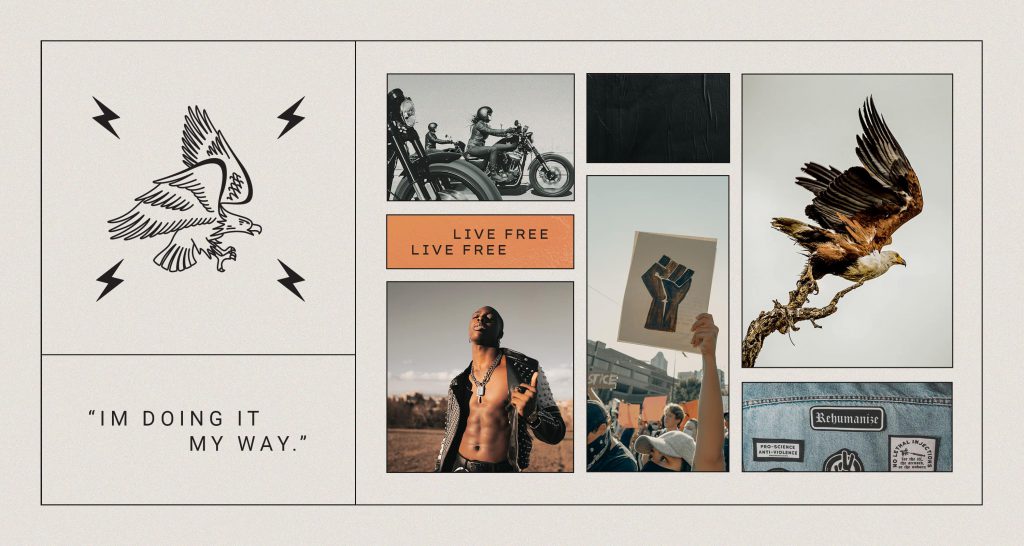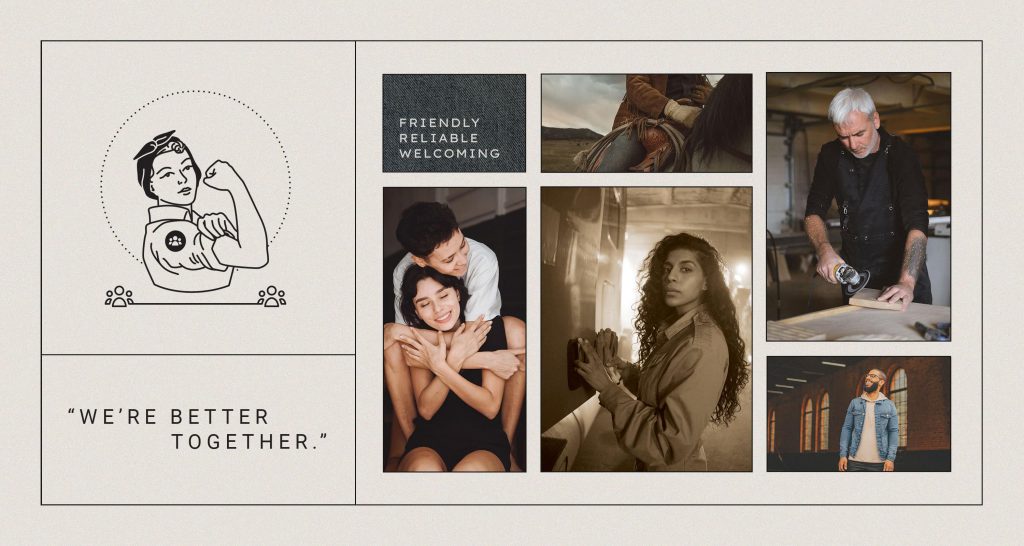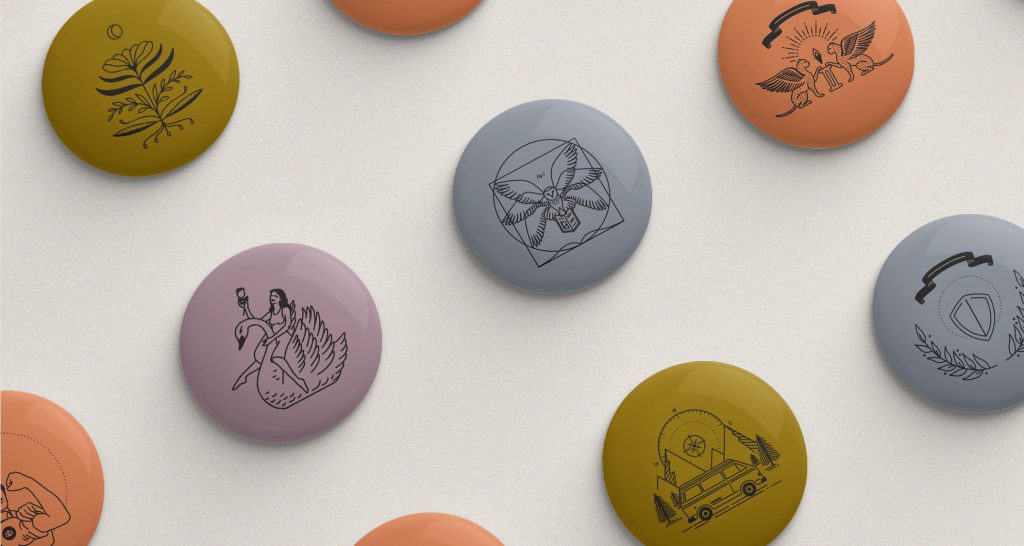It’s not uncommon for brands to want to appeal to everyone. However, by trying to conform to every singular view possible, this approach usually fails because it lacks a clear and specific message. Successful brands are like people; they have depth, a hierarchy of values, personality, and relatability. People are more likely to invest in an entire brand and what it stands for rather than just one product because they want to identify with brands with shared values and interests. Therefore, the brand’s identity must be as well developed as the products it represents.
The 12 Jungian Archetypes
Early in our brand discovery process with clients, we complete a brand analysis that employs the 12 Jungian Archetypes. Ultimately, the direction established through archetypal analysis informs the entire development of a brand: aesthetic, tone, messaging, style, and visual language. It serves as a compass, reliably informing decision-making and creating consistency even as a brand evolves over time. This archetypal framework has helped lay the groundwork for developing and defining many dynamic, relatable, and memorable brands.
Still, over the years, we’ve found that it’s easy to view the brand archetypes as generalizations rather than nuanced but universal representations of the human experience. Because of this, we’ve given special attention to understanding the archetypes and how we present them to our clients.

Creating Our Archetype Designs
Like most things, successful branding starts at the beginning. The results could be ineffective or detrimental if our approach has flaws or oversight. Mistakes and misunderstandings compound with each step. As a result, our process must be built to honor both the opportunity and responsibility of client branding.
When we decided to revisit and refine our brand workshop, we looked at each step to ensure we were making the right decisions — decisions that would move us forward in alignment with our clients without bias or misrepresentation. How do we introduce the potential of each archetype, and what can it mean for a brand? The first step was to create our illustrations of the 12 archetypes.
We wanted to leave room for changing perspectives. We wanted to allow for broad interpretations. We needed the brand archetypes to be clear and memorable. To do this, we started conceptually seeking inspiration from various ideologies, cultures, and periods of history. We prioritized cultural relevance, avoiding dated ideas about certain archetypes. Visually, we created an illustration style that’s controlled and deliberate enough for consistency but still organic to feel accessible, creative, and unique.
Historically, how some of these brand archetypes have been represented doesn’t do them justice. They’re often typecast. Preconceived notions cause them to be quickly and easily dismissed. In a vacuum, the Jester is thought to provide little value. The Rebel gets a bad rap. The Lover seems frivolous. These perceptions stem from a fundamental misunderstanding – a stereotype instead of the archetype – and are reinforced by outdated or narrow representations.
Brand Archetypes in Action
The Rebel
To illustrate this point, let’s look at the Rebel. The Rebel is found in the fulfillment and risk quadrant, leaning towards risk. The Rebel is also known as the outlaw, the disruptor, the revolutionary, and the maverick. People often consider the Rebel “without a cause.” It’s true that, at its worst, the Rebel can be destructive, out of control, or nihilistic. However, a Rebel brand can also be sharp, free-spirited, and brave.
Brands that exemplify the Rebel archetype focus heavily on freedom. This can be liberating but also polarizing. The Rebel is different. They break norms and go against the grain. They can be anti-establishment. Wary of alienating their audience, companies will sometimes discount this archetype early in the branding process. It’s valuable to recognize that the Rebel can create a unifying, three-dimensional personality that inspires action when balanced with supporting brand archetypes. They are powerful. They are free-thinkers. Going against the grain can be a positive and memorable approach. Remember, a revolutionary is just as rebellious as an outlaw.
We love brands with a Rebel quality because they’re true to themselves and aren’t timid in expressing their values. The illustration we used for the Rebel is the eagle – a widely-accepted symbol of freedom and strength – celebrating the positive aspects of this archetype without leaning too hard into its outlaw side. As we further explore the archetype, we look at examples that show the Rebel’s broad range: From Harley Davidson to Lady Gaga.

The Citizen
The Citizen is another archetype that’s frequently pigeonholed. The Citizen sits in the belonging and enjoyment quadrant, leaning heavily on belonging. The Citizen’s alternative names are the everyman, blue-collar, and the pragmatist. Many brands want to associate themselves with the Citizen archetype because of its best characteristics: a personality that is welcoming, friendly, and reliable.
Brands that successfully exemplify the Citizen have a defining character and appeal to the masses. This is a delicate balance. Messaging can easily get lost in trying to appeal to everyone, resulting in a bland or forgettable identity – or worse, no real identity at all.
Since the alternative names for the Citizen include blue-collar, and every(man), the view of this archetype is often limited. We frequently see the Citizen represented by the working-class man. For our illustration to lean into a more accurate understanding of this Citizen, we created an interpretation of Rosie the Riveter. As a woman-owned company, this was a fun twist on the stereotypically male Citizen archetype and an effective way to represent the Citizen’s values: inclusion, positive motivation, hard work, integrity, and ethics.
Since the Citizen’s motto is “We’re better together,” Rosie’s historical mark invites a more well-rounded view of this archetype. As we dig deeper, we ask, “How do we define Citizen?” A part of something. A contributor. An active participant. So, what does this look like on a global scale? And what does it look like at the community level? We love Citizen brands, not just because they appeal to the many, but because they’re vital for valuing the many differences amongst their audience.

The Takeaway
The 12 Jungian Archetypes represent the core elements of the human experience. This means we have to ensure that each one is represented comprehensively. It’s easy to see “Rebel” and think “James Dean.” However, if we really want to connect, we must reach a more holistic understanding of the archetype’s potential. The effective application of each archetype requires an awareness of its depth, range, strengths, and potential downfalls.
Our responsibility as designers, marketers, and communicators is not only to our clients but to their audiences. Our job is to create something meaningful. To make emotional connections that resonate across platforms and populations. It’s an endless discovery of representation and understanding. The more time we spend exploring the 12 archetypes, the more potential we see in each of them and their relationships to one another – and the more our branding process is grounded in the human experience.
We recently worked with StickerMule to turn our archetype illustrations into fun custom pins, stickers, and keychains, which we used during a two-day team branding retreat.
 Mockup from Freepik
Mockup from Freepik
